Retro Replay Review
Gameplay
Sir Lancelot retains the core mechanics familiar to anyone who has ventured through Manic Miner, tasking players with navigating 24 intricately designed platform screens in pursuit of hidden treasures. On the Spectrum version, you tackle each level in a linear sequence, ramping up the challenge as you progress, whereas the Amstrad edition lets you choose your own path, adding a welcome layer of strategic freedom. Each screen is bound by a strict time limit, forcing you to balance careful planning with quick reflexes to collect every item and unlock the exit.
(HEY YOU!! We hope you enjoy! We try not to run ads. So basically, this is a very expensive hobby running this site. Please consider joining us for updates, forums, and more. Network w/ us to make some cash or friends while retro gaming, and you can win some free retro games for posting. Okay, carry on 👍)
Unlike many action games of its era, Sir Lancelot doesn’t arm you with weapons; instead, your only tools are precise jumps and the ability to fall from any height unscathed. Enemies patrol fixed routes, and memorizing their patterns is essential—one wrong step means losing a life and starting the screen over. The absence of a direct offensive capability turns every encounter into a tense dance of timing and spatial awareness.
The level design also incorporates one-way climbs and drop-only ledges, pushing you to think several moves ahead. You’ll find yourself studying each screen’s architecture, plotting routes that let you dodge foes and pick up objects in the optimal order. With only four lives to spare, mistakes sting, but overcoming a tricky section delivers a genuine sense of accomplishment that keeps you coming back for “just one more run.”
Graphics
Graphically, Sir Lancelot carries the unmistakable charm of early ’80s home computer titles. The Spectrum version leverages a limited color palette to create sharp contrasts between platforms, background walls, and roaming adversaries. While color clash can rear its head on crowded screens, the bold primary hues ensure you can always distinguish Lancelot from the scenery.
The Amstrad port benefits from a richer spectrum of shades, giving each room a bit more visual flair. Though still firmly rooted in blocky pixel art, the sprites are crisply defined, and each screen’s unique layout is easy to parse at a glance. From torch-lit corridors to ornate throne rooms, the environments are varied enough to keep things interesting without overwhelming your eyes.
In terms of animation, movement is smooth and responsive on both platforms. Lancelot’s jump arc feels natural, and enemy patrols move with consistent timing, so you can rely on practiced rhythms to outwit them. There’s little in the way of extra visual effects or background detail, but the minimalistic approach serves the gameplay—nothing distracts from plotting your next leap.
Story
Story takes a back seat in Sir Lancelot, as it does in many early platformers, but the premise is clear: brave Sir Lancelot has ventured into a sprawling medieval castle in search of long-lost treasures. There’s no in-game dialogue or cutscenes to flesh out the lore; instead, the narrative unfolds room by room through the treasures you collect and the architecture you traverse.
Each screen feels like a different wing of a grand fortress, with small details—banners, pillars, arches—hinting at the castle’s former glory. The lack of explicit storytelling encourages you to fill in the blanks with your imagination, picturing the trials and triumphs that led Lancelot to each new challenge. In its own way, this simplicity adds to the game’s mystique.
The ambition of the narrative lies in its brevity. By focusing squarely on action and puzzle-solving, Sir Lancelot lets the quest for treasure be your driving force. For players seeking a rich, character-driven plot, it may feel sparse, but for those who appreciate old-school arcade-style adventures, the setup is just right.
Overall Experience
Playing Sir Lancelot is a lesson in precision platforming wrapped in a retro medieval aesthetic. The blend of tight controls, cleverly arranged levels, and the ever-present time limit creates a brisk pace that never feels unfair. Every defeat teaches you something new about enemy timing or optimal routes, making the journey as rewarding as it is challenging.
Replay value is high, especially if you’ve got the Amstrad version—choosing the order of the 24 rooms transforms each playthrough into a fresh puzzle. Even on the Spectrum, where the sequence is fixed, speedrunners and perfectionists will find plenty to dissect, from split-second route adjustments to edging out just a few extra seconds on the clock.
For fans of classic platformers or anyone eager to experience a slice of home-computing history, Sir Lancelot delivers an engaging and satisfyingly old-school adventure. Its learning curve is steep, and patience is key, but mastering each screen’s quirks makes every victory feel hard-earned. Dust off your joystick and prepare for a noble quest through pixelated halls—this is one medieval romp that stands the test of time.
 Retro Replay Retro Replay gaming reviews, news, emulation, geek stuff and more!
Retro Replay Retro Replay gaming reviews, news, emulation, geek stuff and more!

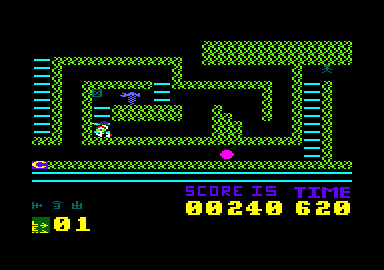
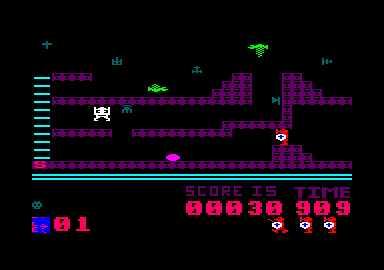
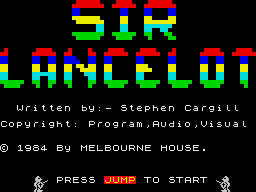
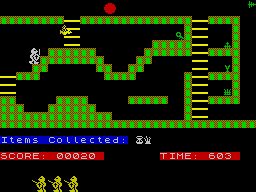


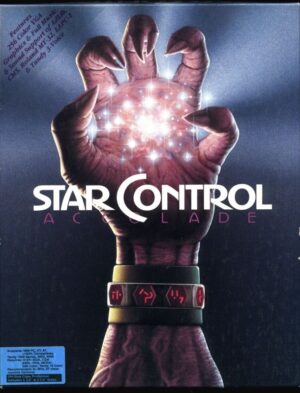

Reviews
There are no reviews yet.